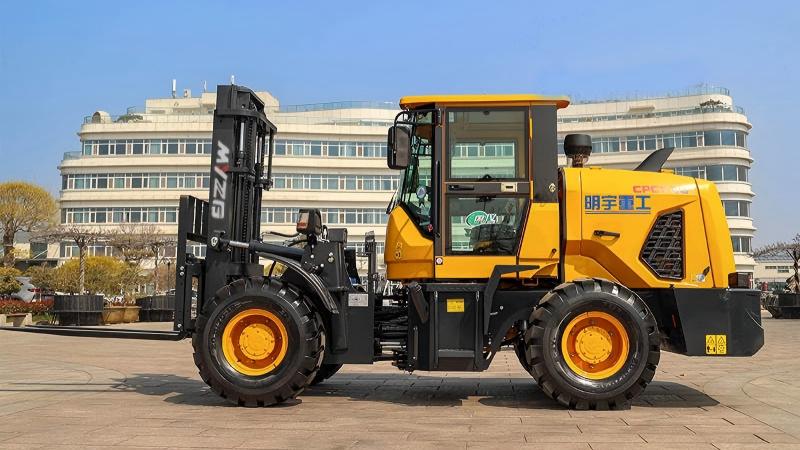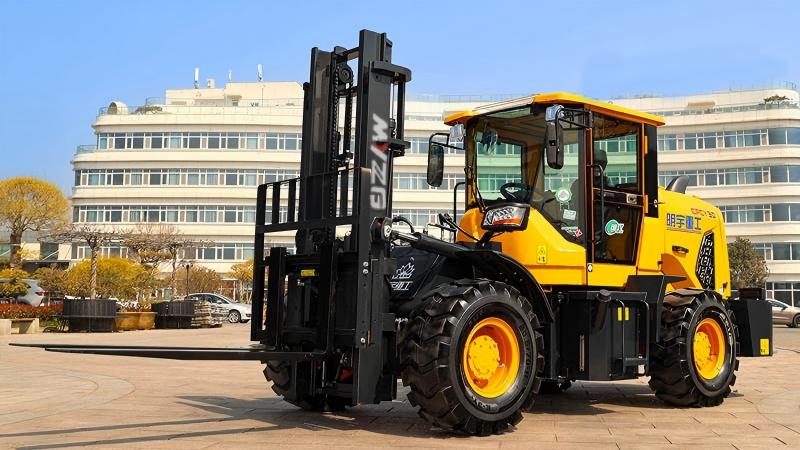The question of the typical maximum lifting capacity for an off-road forklift is fundamental for professionals in construction, agriculture, and heavy industry, yet the answer is nuanced and not defined by a single figure. Unlike their warehouse counterparts, off-road or rough terrain forklifts are engineered for power, stability, and durability on uneven, unpaved, and often challenging surfaces. While models commonly encountered on job sites frequently feature capacities ranging from 6,000 to 12,000 pounds, the upper limits of these robust machines extend far beyond, with high-capacity models reaching 35,000, 50,000, or even 80,000 pounds for extreme-duty applications. This wide variance is a direct reflection of the diverse tasks they are built to perform, from lifting pallets of bricks and lumber to moving massive industrial components and steel coils. The defining characteristic of an off-road forklift is not just its lifting power but its integration with features like large, heavy-tread pneumatic tires for superior traction and flotation, a rugged chassis to withstand torsional stresses, and powerful diesel or gasoline engines that provide the necessary torque for both locomotion and heavy lifting. Understanding the typical capacity, therefore, begins with acknowledging this spectrum, where a "typical" machine is context-dependent, designed to bridge the gap between the requirements of a standard construction site and the formidable demands of heavy industrial projects, shipbuilding, and major infrastructure development.
The specific lifting capacity of any given off-road forklift is not an arbitrary number but is determined by a complex interplay of critical engineering and design factors, with the load center being paramount. The load center is the horizontal distance from the forklift's front forks' vertical face to the center of gravity of the load, and standard calculations are based on a 24-inch load center. As a load is positioned further out on the forks, its effective weight from the perspective of the forklift's stability system increases, thereby reducing the machine's safe operating capacity. This principle is visually represented on the forklift's data plate, which charts the derated capacity at various load centers and lift heights. Furthermore, the physical configuration of the forklift itself is a major determinant; a standard two-wheel drive model will have a different capacity profile than a more stable four-wheel drive counterpart. Attachments also play a crucial role; while a pair of standard forks might allow a forklift to lift its maximum rated weight, equipping it with a boom, a jib, a rotator, or fork extensions can significantly diminish its safe working capacity by altering the load center and the machine's dynamic stability. The machine's counterweight, tire size and pressure, mast type (whether a standard simplex or a towering quad mast), and the overall condition of its hydraulic and structural systems all converge to define the final, safe lifting capacity for any specific task and working condition.
The practical application of an off-road forklift's lifting capacity is best understood by examining its deployment across key industries, where the choice of machine is directly correlated to the weight and nature of the materials being handled. In the construction sector, which represents a primary market for these machines, capacities between 8,000 and 15,000 pounds are exceedingly common, perfectly suited for transporting and placing pallets of concrete blocks, bundles of lumber, roofing materials, and scaffolding to elevated work sites. Venturing into the lumber and pulpwood industries, forklifts with capacities in the 12,000 to 30,000-pound range are indispensable for moving massive stacks of logs and handling heavy bales of recycled materials. For the most demanding environments, such as steel service centers, heavy fabrication workshops, and portside operations, high-capacity off-road forklifts truly come into their own. These industrial behemoths, often equipped with specialized attachments like coil rams or large-area forks, are routinely rated for 36,000 to 80,000 pounds, enabling them to maneuver colossal steel coils, giant concrete pipes, and pre-fabricated structural elements with precision, tasks that would be impossible for lesser machines and would otherwise require a mobile crane.
Ultimately, selecting an off-road forklift with the appropriate maximum lifting capacity is a critical decision that hinges on a comprehensive analysis of operational requirements, transcending the mere consideration of maximum weight. A prudent operator or project manager must conduct a thorough assessment of the typical and peak loads to be handled, the most common load centers encountered, the necessary lift heights, and the specific terrain and environmental conditions of the worksite. Investing in a machine with insufficient capacity is a clear safety hazard, leading to instability and potential tip-overs, while over-specifying can result in unnecessary capital expenditure, higher fuel consumption, and a machine that is less maneuverable and efficient for daily tasks. Therefore, consulting the manufacturer's load charts, understanding the impact of various attachments, and rigorously adhering to the data plate specifications are non-negotiable practices for safe and productive operation. The typical maximum lifting capacity is thus a starting point for a much deeper conversation about engineering integrity, operational safety, and economic efficiency, ensuring that the powerful capabilities of the off-road forklift are harnessed effectively and responsibly to meet the formidable challenges of the modern industrial and construction landscape.
Post time:Nov.11.2025



